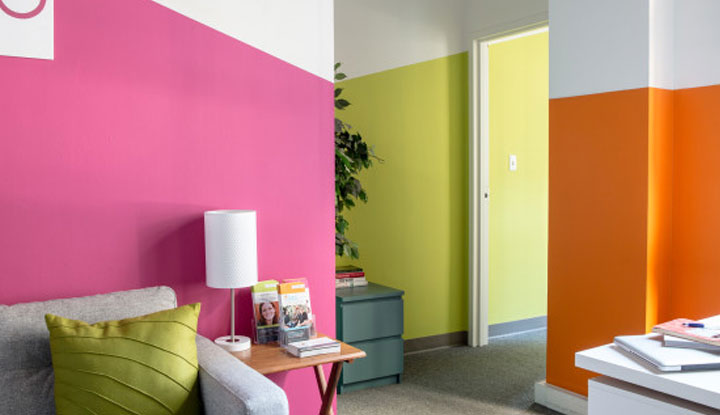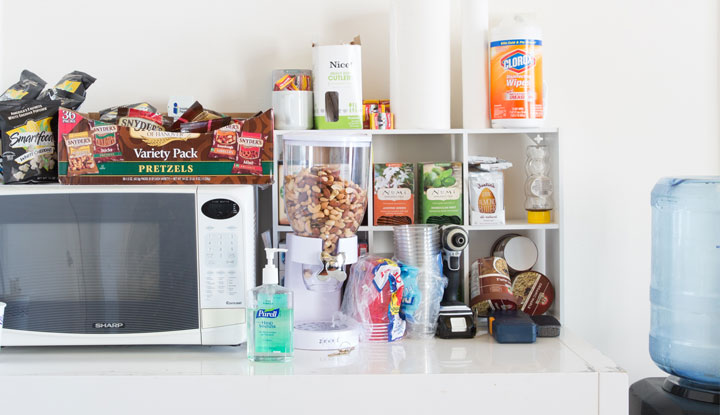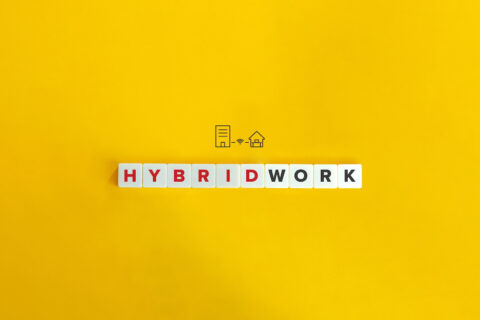I used to believe that if you equip employees with desks and computers, the office was set. I wanted to focus on driving business metrics. However, after co-founding several startups experience has taught me that the workspace you share with your team does matter. It contributes to the vibe (i.e., company culture) of the office. It can, when done correctly, facilitate a more creative and productive environment.
Before we committed to renewing our commercial office space lease in a small 685 square feet space, we committed to investing in interior design. According to the CoreNet Global Corporate Real Estate 2020 survey of 500 corporate real estate executives, square foot per employee has decreased from 225 in 2010 to 176 in 2012. It is projected to reach 151 square feet in 2017.

Like many startups we were already working in tight quarters, with staffing plans to add new hires. Meanwhile, 25 percent of our space was used as storage. We share the same open space, which is useful given we collaboratively build social network apps. And we needed to grow, but also wanted to keep real estate costs down while maintaining a comfortable work space.
Despite concerns, we renewed our lease at a great rate. The trade off? Admittedly, we weren’t sure how we could add more people comfortably and productively. So, we brought in an expert to design around office space constraints. The following steps were used for our office space redesign and these tips can reveal how you can maximize your current space:
-
Set a Budget and Timeline
If your space is less than 5,000 square feet, you can spend anywhere from $5,000-$20,000 dollars. Noa Santos, the founder and CEO of Homepolish, an NYC-based interior design firm, suggests, “For spaces that are 5,000 – 10,000 square feet, you need a budget of $10,000-$200,000 dollars. The numbers change drastically depending on what needs to happen to the space. An office that just needs some editing will be cheaper than a space that requires a [complete overhaul].” Once we set our budget, we targeted a two-month time frame for the scope of work we wanted done: painting, wallpaper and some new furniture.
-
Take Inventory
Make a list of exactly how you plan to use the office space. Will you use the office for brainstorming, weekly team meetings, client meetings, lunch, storage, etc.? Map out where these activities currently take place. Next, list the furniture you use, don’t use, like and dislike. Clearing away extra office furniture and fixtures can create more space. Are you holding onto used printer cartridges? Do you really need an extra computer monitor? There are many organizations that will take your donations or recycle electronics. Some will even pick them up for free.
-
Create an Inspiration Board
Pinterest is a great place to start. Type in keywords to get ideas. Start with terms like, “small conference room,” “startup office,” or “creative workspace.” Then re-pin inspiration office design images for your office space. If you decide to hire an interior designer, an inspiration board is a great basis for communicating preferences. It’s no wonder Pinterest has become interior decorators’ go-to tool.

Photo Credit: Aubrie Pick; Source: Courtesy Photos -
Assess Your Office Space
Break out the measuring tape and jot down the dimensions of each room, including ceiling height. Sketch out the room and spec it out with measurements. Next, realistically assess space constraints. For example, our landlord would not let us paint the exposed concrete ceiling. Finally, understand your space’s best assets. We have big windows we can open, which provide natural northern light. This helps accentuate the positive and cut down on needs for lighting fixtures.
-
Prioritize Your Investment
What do you see every day when you walk in? For an immediate visual impact, consider painting your walls, even if you’re renting. You can always paint over them when you move out. Investing in a professional designer’s time is worth the fresh expert perspective on the space’s potential. They can also help prioritize your budget. Santos says, “If you’re a small business that’s growing rapidly, we recommend investing in quality furniture and items that you can take with you once you outgrow your space.” The hottest buys among his designers, for small businesses, tend to be creative storage alternatives and co-working break-out space furniture that allows them to throw an event or meet in small groups.
© YFS Magazine. All Rights Reserved. Copying prohibited. All material is protected by U.S. and international copyright laws. Unauthorized reproduction or distribution of this material is prohibited. Sharing of this material under Attribution-NonCommercial-NoDerivatives 4.0 International terms, listed here, is permitted.








